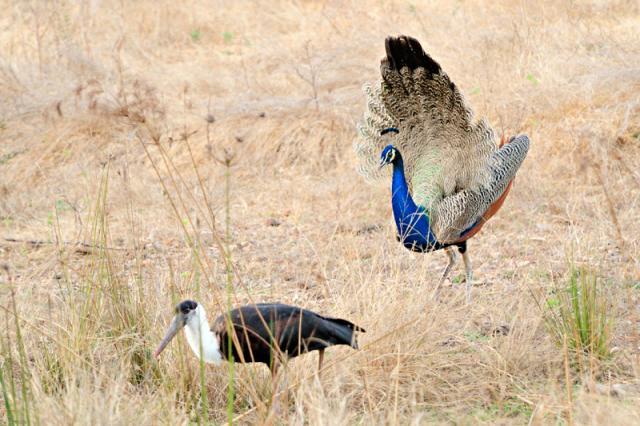Quote:
Hmm, I think there's two but as Resolution said about the teasing of more forms; there's the Nepalese and Rajasthani forms. IB Peafowl in Southern India may be introduced because they are similar to Sri Lanka.
Sri Lankan Singhalensis:
The thing I find astonishing about this bird is its bold white facial skin and the crest which looks a bit flaky and is sapphire in hue. As Resolution posted before the female is very interesting and looks almost like it has some Green Peafowl blood.
The picture that Dani posted was from Rajasthan, India where another distinctive form is found:
A cristatus from east India (Ahmedabad):
There is another form found in Nepal. When I see these pictures I always think they're kinda chubby.
(credits to flyingmonkeypoop for the last two photos)
I'm trying to look for different pictures of the wing patterns of the different forms, I wonder if Clinton can sketch the differences.
Resolution - Indeed it's a very strange bird. Pictures aren't always accurate, as with that male "spicifer" in Jurong bird park. Looking back at my original photos it does have a lot of traits of those forms you mentioned. The posturing in that "standing" photograph reminded me a lot of annamensis, while the photograph in the cage reminds me of the Tonkin imperator... The bird's eyes are also rather strange; the irises aren't very pale but rather transluscent looking; in my standing photograph it almost looks as if it's the nictitating membrane. The picture on the display in the aviary looked a bit like Wolfgang stock muticus or nominate imperator. Then there's that purple subauricle you mentioned before which is like Javanensis... Only with DNA from this bird will we know for sure.
Here's a very strange video clip which I think adds a lot to go against Darwin's theory of sexual selection:
The Javanese Green Peafowl displays even though it appears later on there's no female at 1:10. Instead, there is a Javan Rusa buck that is nearby. Suddenly it gets scared, I think it's because the bird's display.




























